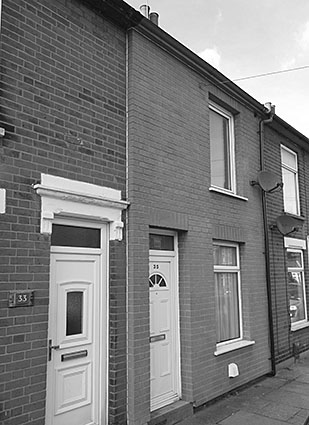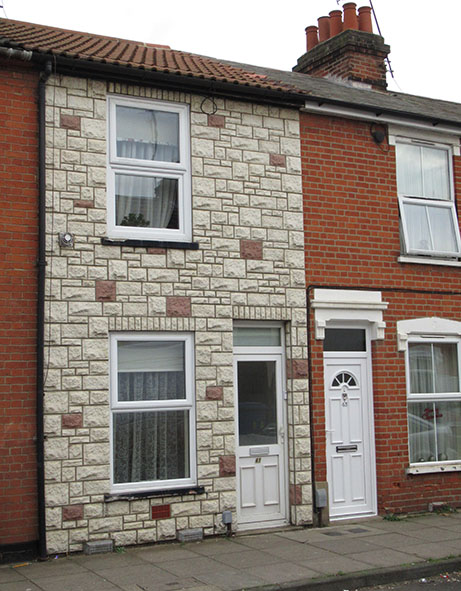- Screen Colours:
- Normal
- Black & Yellow
 Solid brick walls breathe; one of the essential attributes of a 9-inch solid brick wall is that it will allow water vapour to percolate to the external air, and we humans create a substantial amount of water vapour in our daily lives. We breathe out, we wash up and we dry clothes on our radiators; all that water needs to go somewhere.
Solid brick walls breathe; one of the essential attributes of a 9-inch solid brick wall is that it will allow water vapour to percolate to the external air, and we humans create a substantial amount of water vapour in our daily lives. We breathe out, we wash up and we dry clothes on our radiators; all that water needs to go somewhere.
If we apply an impervious coat (ceramic tiles, vinyl wall paper or gloss paint on hard plaster) to the inside of the wall, water vapour cannot pass through, condensation is likely and in bathrooms and kitchens mould will grow in the corner between ceiling and wall.
Why do I mention this? Because of the need to insulate solid brick walls, either internally or externally. The companies that supply and fix this insulation will sell the product on its thermal properties and the way in which it will reduce heat loss through the walls and save us money.
What they don’t say too much about is what will happen to the water vapour that was previously passing through the wall with the heat we were losing. A typical foamed insulation is also impervious; thus the water vapour will condense somewhere within the thickness of the newly insulated wall.
Insulation fixed externally will need a surface coat, either painted render, or a thin laminate of manufactured material usually embossed to represent timber boarding, brickwork or stone facing. This will change the external appearance of the property, in some cases for the better but it is normally not acceptable on listed buildings, or on buildings in a Conservation Area. The Ipswich Society doesn’t like one property in a terrace being insulated and clad differently from its neighbours.
An alternative could be to insulate internally, fixing foam panels to the inside of external walls. To be cost effective these panels need to be of a certain thickness, perhaps a minimum of 50 mm (2 inches) which has a number of knock-on effects. It reduces the internal dimensions and will no doubt protrude beyond the skirting board and the other architectural features in the room – the internal insulation panels will additionally need a surface finish, a skim coat of plaster.
Dominic Wall, in the January issue of the Newsletter, highlights a couple of examples of  external insulation, protruding forward of the original brickwork and clad in a ‘look-alike’ laminate panel. These panels use a different brick bond and the architectural detailing is lost.
external insulation, protruding forward of the original brickwork and clad in a ‘look-alike’ laminate panel. These panels use a different brick bond and the architectural detailing is lost.
In my opinion the use of artificial stone on terraced property in Ipswich (there is no building stone in Suffolk) is an anathema, no matter how well applied, how closely it resembles real stone or how little of it there is. It simply isn’t Suffolk vernacular.
John Norman